Pyrenean Chamois in Arrens-Marsous Pyrenees National Park, France
So who says you can't go to France for a wildlife adventure? Well, of course virtually everyone, and I agreed with this until I read Jon Hall's Mammalwatching.com some years back and learned otherwise! (See Jon's report and links here). Actually it ends up that Europe can offer and astounding wildlife adventure and France is definitely part of the action.
Be sure to check out our Pbase Galleries for more pics of France!
Vercors National Park
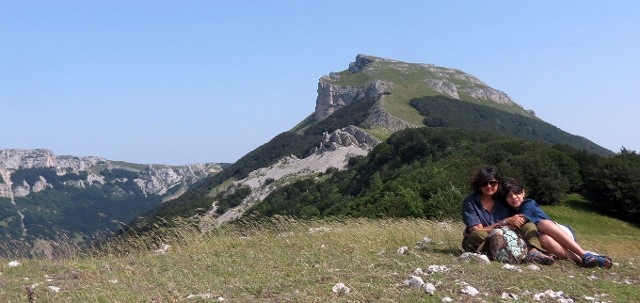
Cokie and Som resting during one of our treks in Vercors.
Our very short trip to France involved two main locations, Vercors National Park and Pyrenees National Park both located on opposite ends of the country. Our main push for our 2013 European wildlife expedition were Italy, Tunisia and Spain, but we had to pass through France, so why not try to nail new species there as well. And with only a few days to accomplish this goal, we did just that.
After a pretty impressive stint in Italy (see report here), we entered France and found our way to the lovely farmhouse lodge, Auberge du Pioneer (website here) , located in the southwestern sector of the greater Vercors National Park region. Auberge du Pioneer is a lovely old farmhouse that is now a guest house and excellent restaurant. We spent a couple nice days with my family, including this time, my mother & father as well as Cokie and Som.
Since our main Alps targets were achieved so well and easily in Stelvio National Park in Italy, we opted to try for some smaller species in Vercors. What I really wanted to see was a Dormouse - any species would have been fine with me... Of course, as was the trend all frickin' summer, my traps once again all came up empty (the entire frickin summer, we could not entice anything to enter our traps!) I was hoping to find Mouflon as well but we were skunked...
We failed to find any Dormice in our many hours in the forests and meadows of the park, but luckily Auberge de Pioneer is riddled with them! On our last afternoon at the farmhouse, the owner came out with a catch containing TWO Fat Dormice! He told me he caught them the previous evening and he gets as many as four or more every night. Evidently they enter the attic via the electrical cables and are quite a problem for the owners. But in true nature-loving style, they refuse to kill them instead opting to trap them and drive them several kilometers down the road and releasing them in to the wild alive! I saluted him for this action. The owner asked if we wanted to go with him to the release sight and attempt some photography and we of course accepted. A few lovely images of Glis glis later, we had our Dormouse species! I was impressed with how large they were.
Fat or Edible Dormouse (Glis glis)

Glis glis! The Fat or Edible Dormouse, named after the fact that the Roman soldiers used to eat them, were a welcome sight while we were in Vercors.
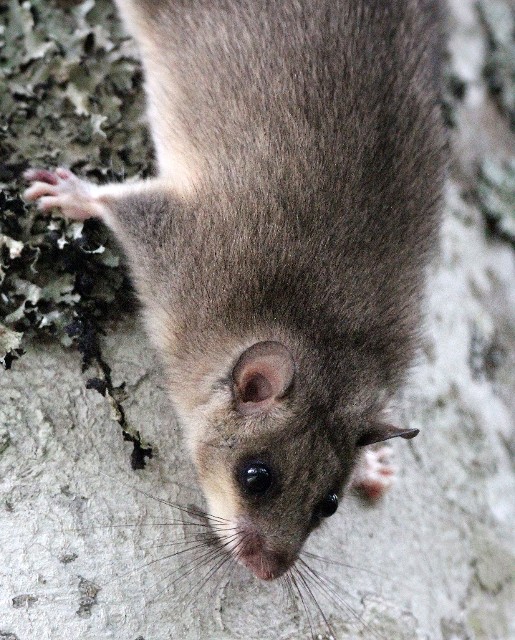
About the size of a smallish squirrel, I was impressed with their size.

Hence the name "Fat Dormouse". It almost appears there is an incipient flap of skin between the front and hind limbs - perhaps evolving into a flying dormouse?

This one was very curious of us....
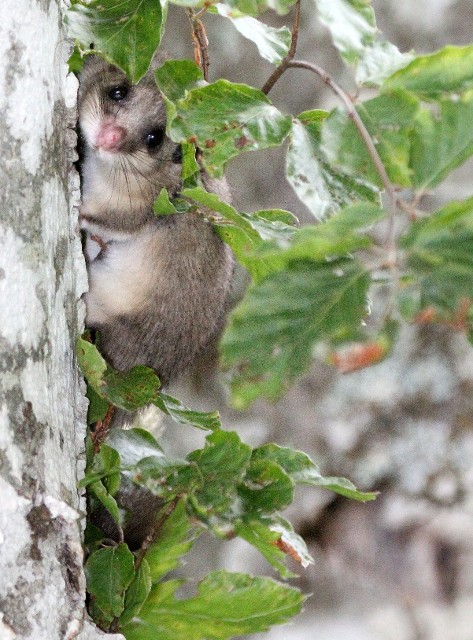
This one was thinking he was hidden...
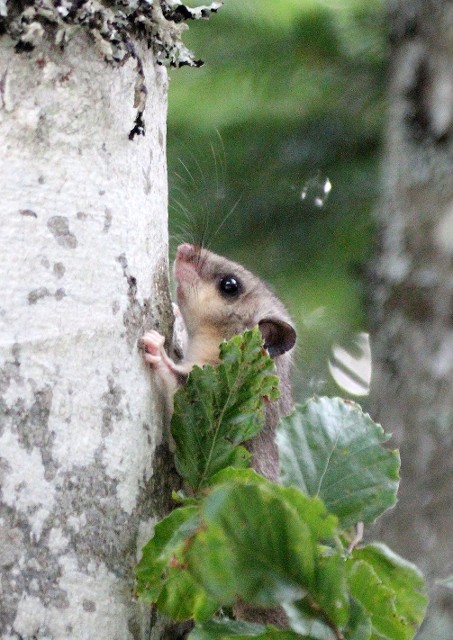
Heading up!
Vercors is a very impressive region. Evidently it is easy to spot both Alpine Ibex and Chamois there, although we made little effort to do so, and consequently saw none. Our main bovid target were the legendary Mouflon that so many had reported and photographed in the park. We searched and searched and searched - no luck. Aside from the Fat Dormouse, the only other mammals spotted were European Roe Deer and one lone Alpine Marmot. No worries, the area's scenic beauty alone was worth being there!
Alpine Marmot (Marmota marmota)
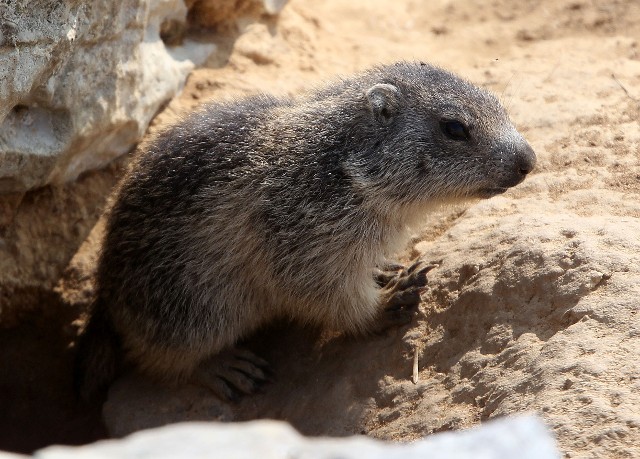
We only spotted a couple sub-adults. This one entertained us and several other photographers for about an hour.
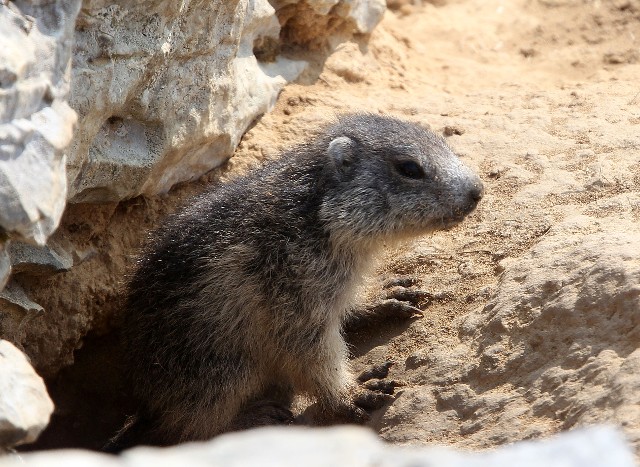
Alpine Marmot in Vercors
European Roe Deer (Capreolus capreolus)
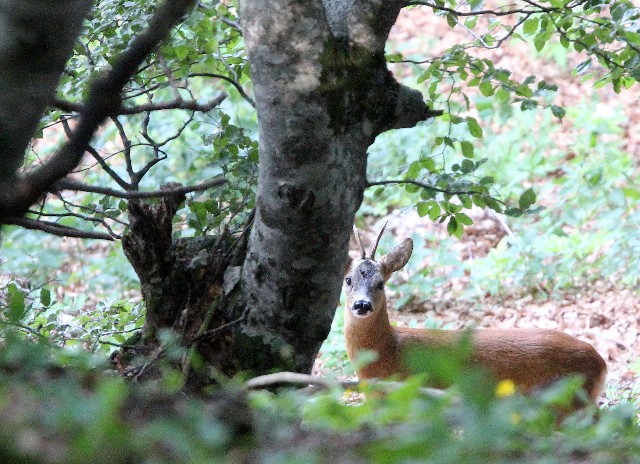
A nice year-old stag European Roe Deer in Vercors.
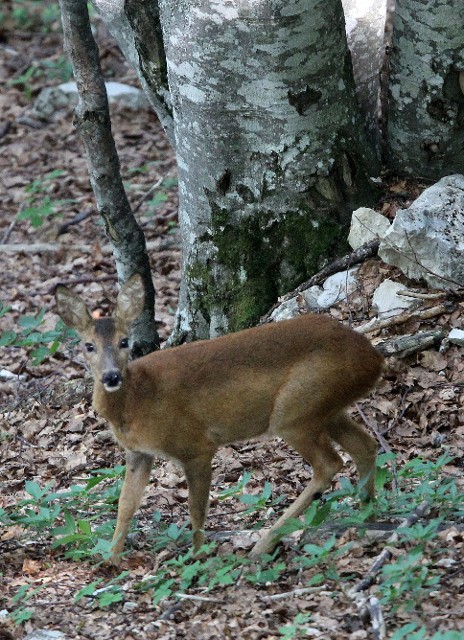
Female European Roe in Vercors

As like most national parks in Europe, it seems that the most common animal is the cow or goat...

Vercors is arguably one of the more beautiful places in France. We all loved exploring the valleys and mountains of the region.
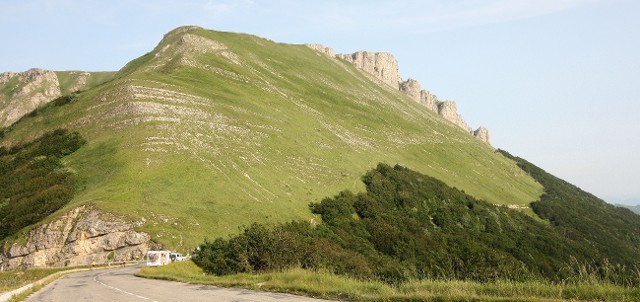
One of the many uplifted massifs in Vercors.
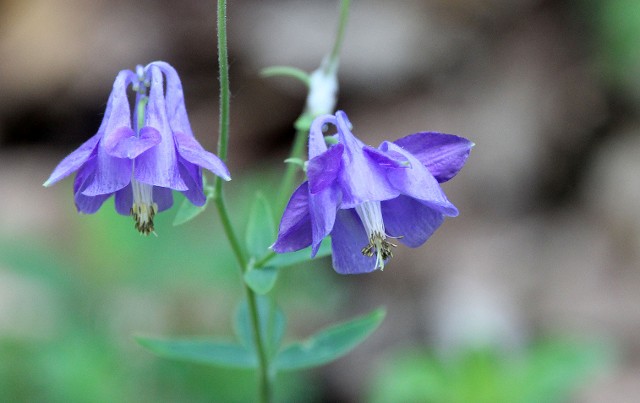
Vercors was exploding with wildflowers this July. As with the eastern Alps we were visiting just a few days earlier, the winter was long and wet, allowing for a spectacular bloom for us to enjoy. Here we have a couple lovely Ancolie Commune (Aquilegia vulgaris) blooming along one of the trails in Vercors.
After a lovely couple days in Vercors, and bidding farewell to my mom and dad who were off to the Loire Valley and Paris, the Smith clan headed further west to the Pyrenees Mountains for one more target - the Izard (Pyrenean Chamois). Along the way across France, Som talked me in to stopping in Andorra first. For some reason, I cannot pass a duty-free zone without her knowing about it and wanting to stop there!
Andorra
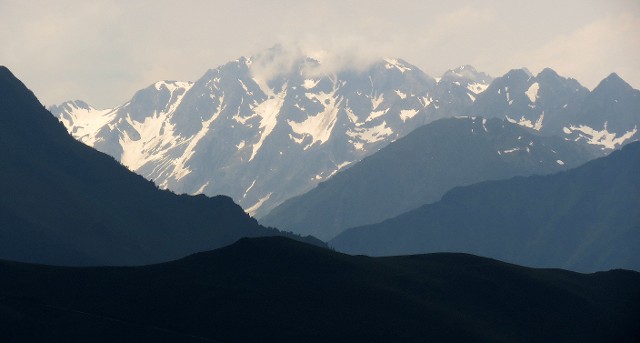
Andorra is situated in a spectacular section of the Pyrenees Mountains separating mainland Europe and the Iberian Peninsula.
The stop in Andorra put us in an interesting position geographically. We spent the night there and opted to travel the entire spine of the Pyrenees north toward our ultimate destination - Pyrenees National Park and Arrens-Marsous. While the drive was a bit long, it was by far one of the most spectacular drives I have ever done. Every corner afforded outstanding views of this amazing mountain range. Pretty much the entire range is grazed to death by sheep and massive cows, but it is still stunning. I was hoping to spot wildlife en route but aside from yet another jet-black European Red Squirrel, there was nothing but sheep, goats and cattle to be seen.

Known for its duty free status, Andorra seems to be suffering a bit from the economic woes of Europe nowadays. The place seemed to be a bit run down and depressed... But we did have some pretty decent Spanish cuisine at our hotel this evening. Spanish is definitely the dominant culture here.
Pyrenees National Park
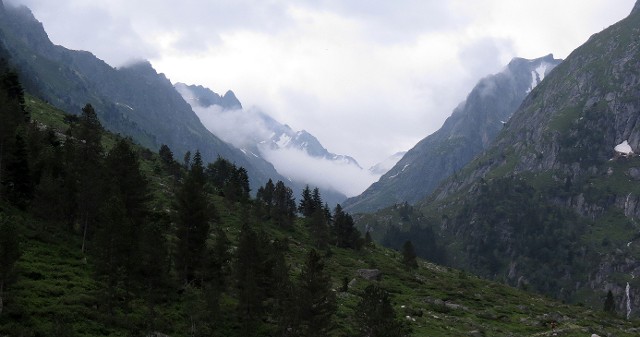
The Pyrenees are every bit as spectacular as the European Alps. We very leisurely spent an entire day driving from Andorra up the spine of the Pyrenees to get to the national park with the same name. Outstanding day!
Eventually reaching Pyrenees National Park, we still had time to try for the Izard (Chamois) at Lac du Estaing, a spot that Jon Hall had seen in his visit to the area (See Jon's report here). We had plenty of light but found the lake area pretty busy with tourists. We still opted to trek on the trail that started at the end of the lake for a bit to see if we could get lucky. We trekked for a couple kilometers in to the high mountain valley, but sadly all we saw were huge white cows and literally thousands of sheep grazing the region to death! No exageration - there were literally thousands of sheep as high as you could see in all directions - no doubt gobbling up all of the forage for any Chamois who was brave enough to be in the area. Needless to say, we saw nothing, and although the information center in Arrens-Marsous assured me there were still Chamois there, I am not sure if I would attempt a sighting there again if I were to return to the park.
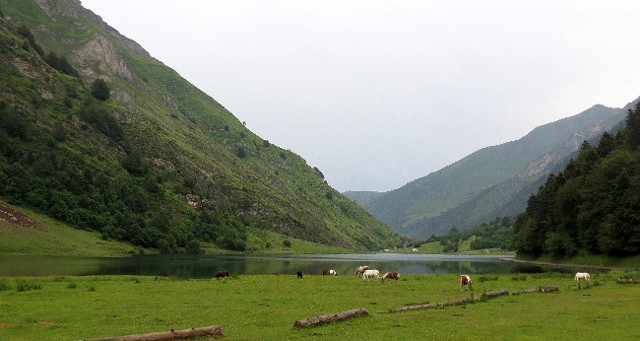
Lac du Estaing was our first stop upon arrival in Arrens-Marsous.
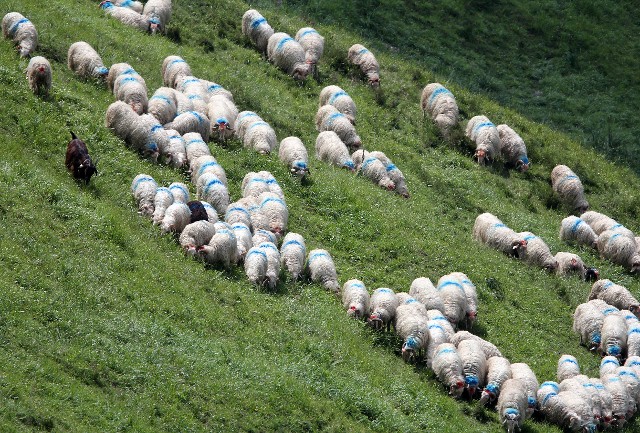
Too bad these weren't real Blue Sheep (the Tibetan variety...)! These were by far the most common mammal in the Pyrenees National Park.
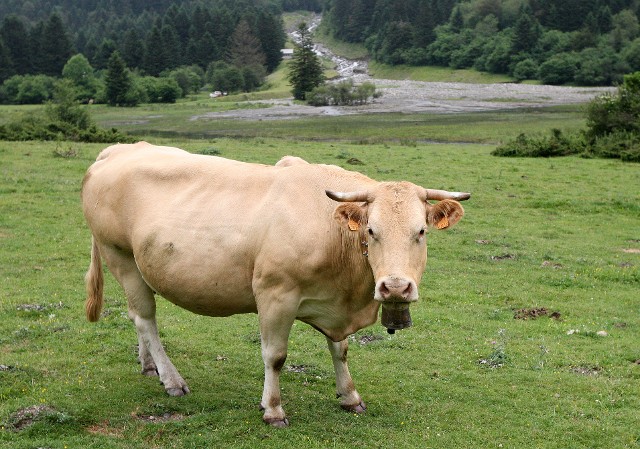
The second most common mammal...
With information from Jon Hall's report and the visitor information center, we put all our effort in the trail that begins at the end of D105 a couple kilometers beyond Lac du Teche. The trail is well marked and very easy to follow. It's a pretty gentle trail and we entered about 3 kilometers and eventually spotted as many as four Pyrenean Chamois on both sides of the valley. Most sightings appear to be on the south side of the Balaitous Massif but we caught our best views of three males grazing on the adjacent slope. All in all it was out outstanding morning viewing our first Pyrenean Chamois! With this species under our belts, we now had quality sightings of all three European species of this very cool mammal.
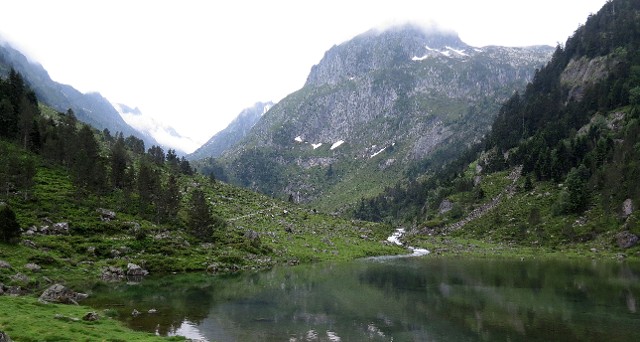
Lac du Teche. Our trek to the face of the Balaitous Massif took us past this spectacular place!
Pyrenean Chamois (Izard) (Rubicapra pyrenaica pyrenaica)
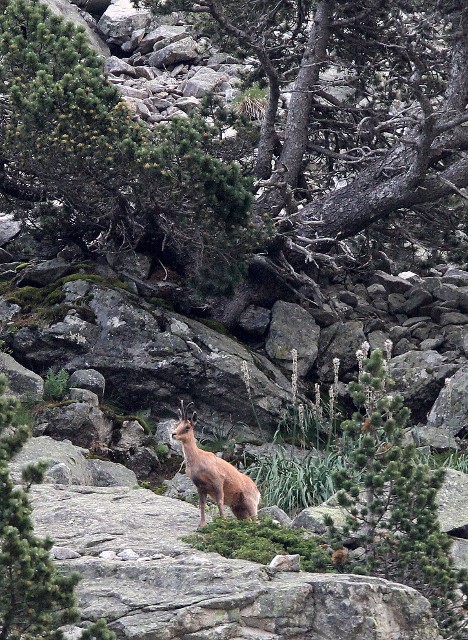
It didn't take us too long before we located the Izard during our trek form Lac du Teche. We came across at least 4-5 of them on both sides of the valley.
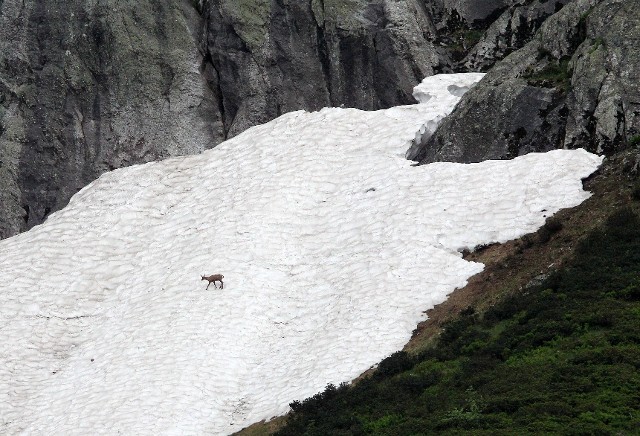
Initially all we saw was this distant young male on the glacier across the valley from us. Then Som noticed several more directy behind us. Good day!
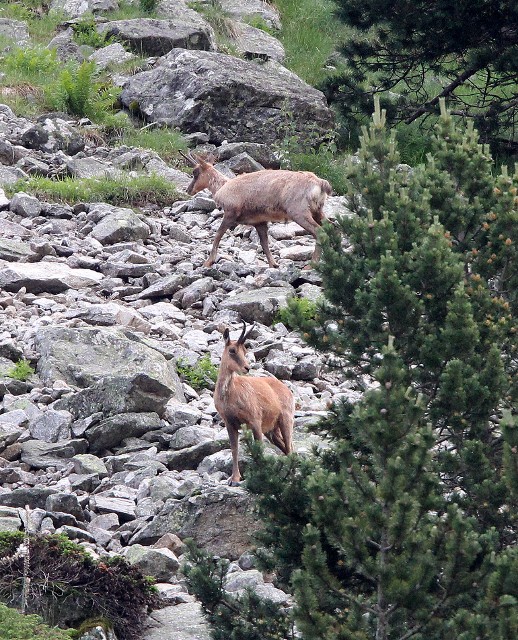
They never really allowed me to approach too closely though....

Pyrenean Chamois!

Spectacular place...
Fire Salamander (Salamandra salamandra)
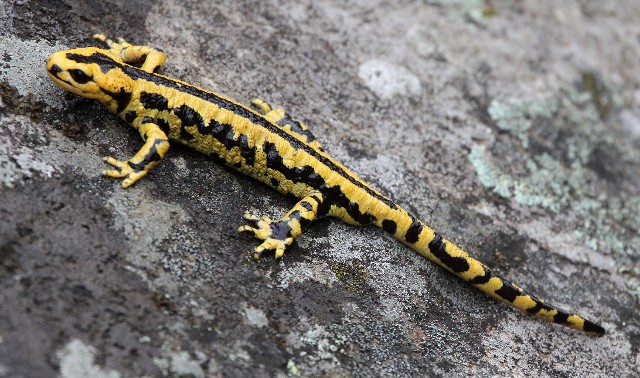
A surprise animal for the trip was this awesome Fire Salamander we spotted on the trail from Lac du Teche.
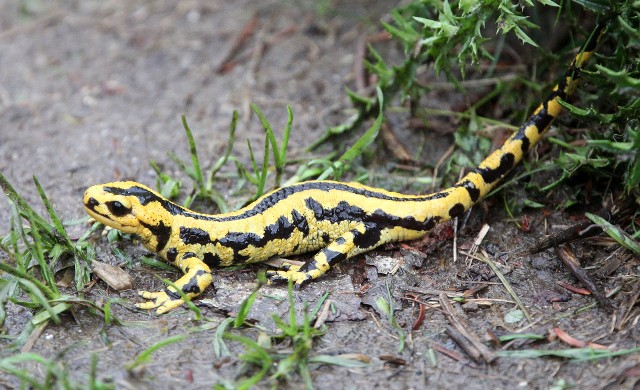
Striking!

Interesting, as he noticed he'd been spotted, he boogied to the nearest patch of yellow flowers he could find. I guess Fire Salamanders have color vision.
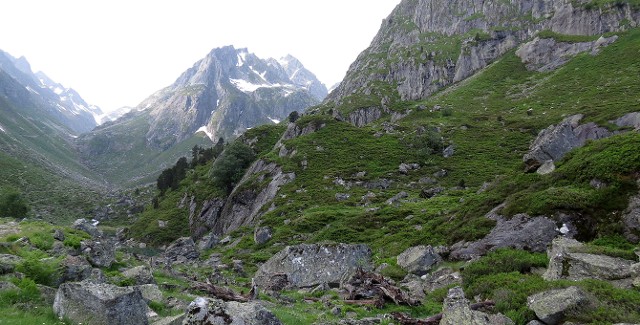
Trekking the Pyrenees National Park

Amazing scenery from every angle!
Our time in France this summer was short but very productive. I will absolutely endeavor to return for some more quality time mammaling in France's wild areas.
France Mammal List
- Alpine Marmot (Marmota marmota)
- Pyrenean Chamois (Izard) (Rubicapra pyrenaica pyrenaica)
- Pyrenean Red Squirrel (Sciurus vulgaris alpicus)
- European Roe Deer (Capreolus capreolus)
- Edible or Fat Dormouse (Glis glis)
- Feral Goat (Capra aegagrus hircus)
Other Stuff

Traveling through southeastern France was filled with fields of sunflowers.
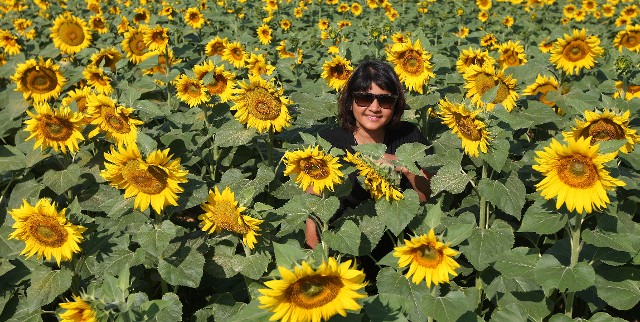
Is Som in there somewhere?
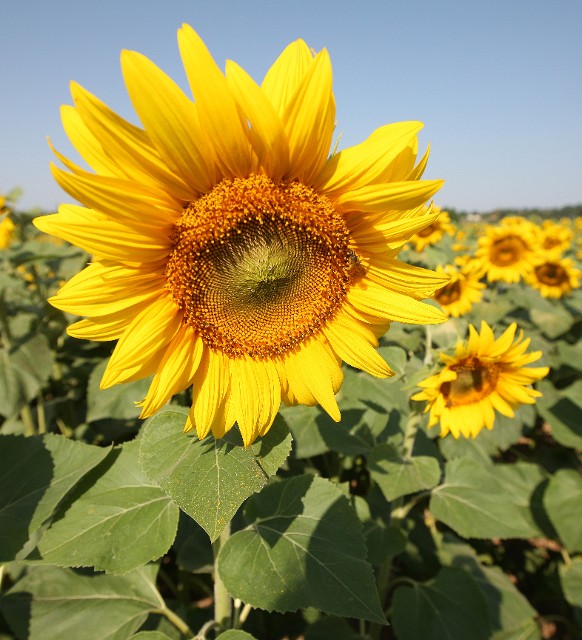
Really quite nice

We came across many awesome insects while in France. Here are a couple Trichiniinae scarabs found on a thistle in Vercors.
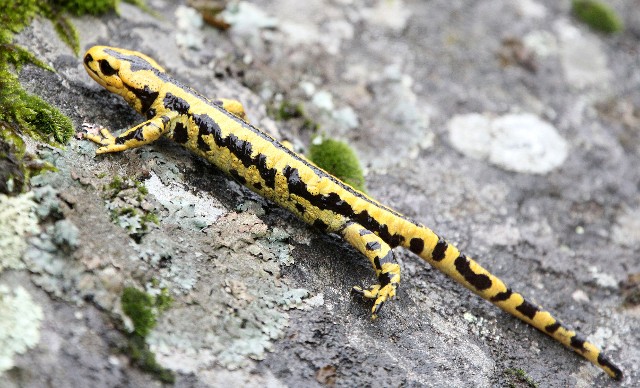
I still can't get over this amazing Fire Salamander from the Pyrenees!
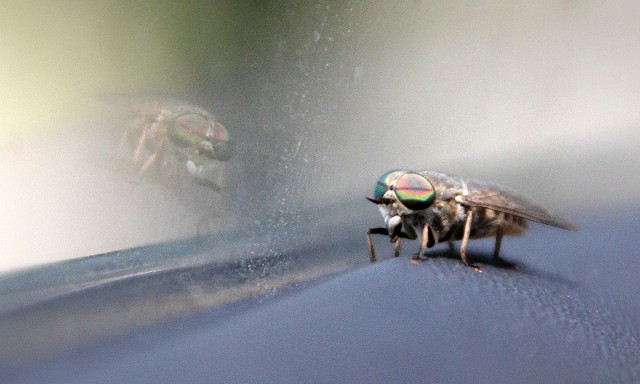
Som caught this awesome little fly staring at himself in the window of our rental car...
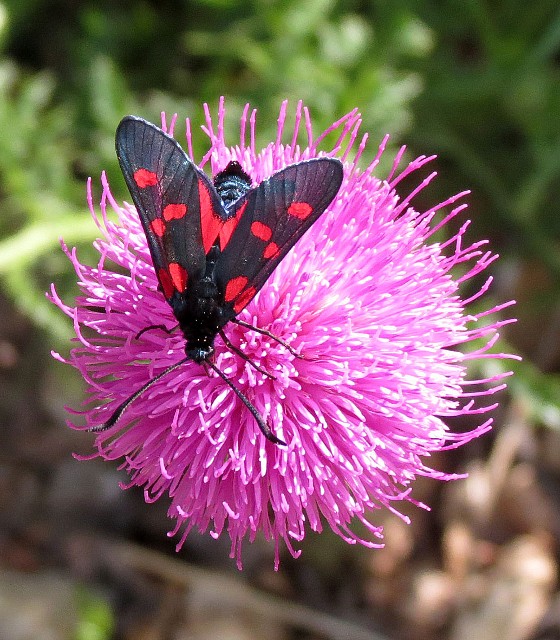
Awesome diurnal moths were everywhere!
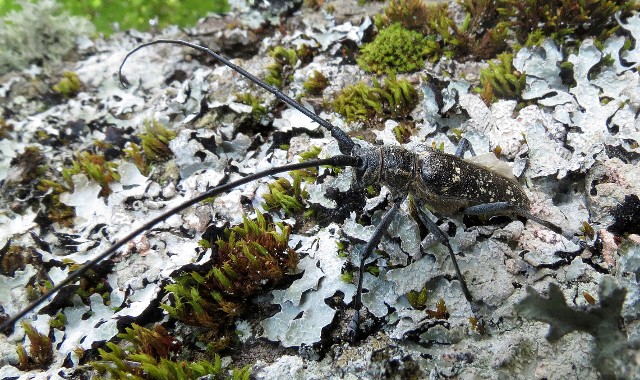
We caught this spectacularly cryptic Monochamus galloprovincialis pistor in Vercor's National Park, France.
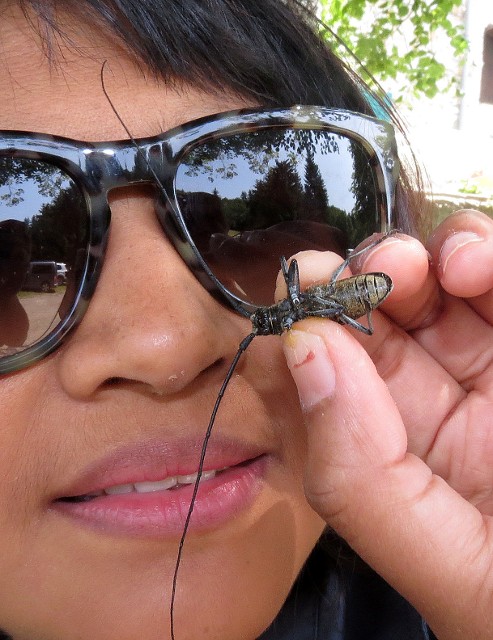
Som ain't afraid of no Monochamus!
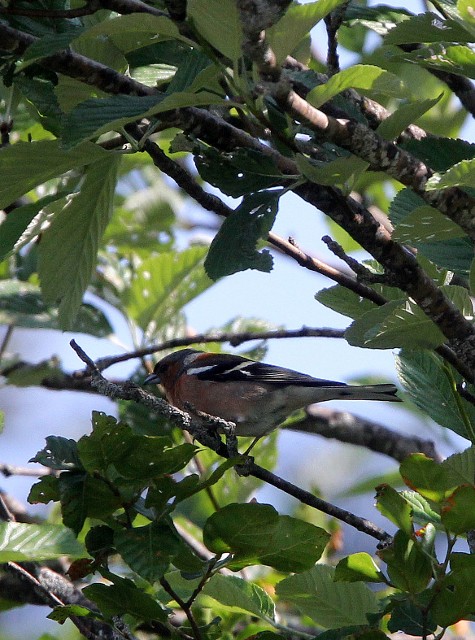
We only caught sight of a few species of birds while in France this time. Here is a Greenfinch in Vercors.

The Pyrenees were home to many European Griffon Vultures.
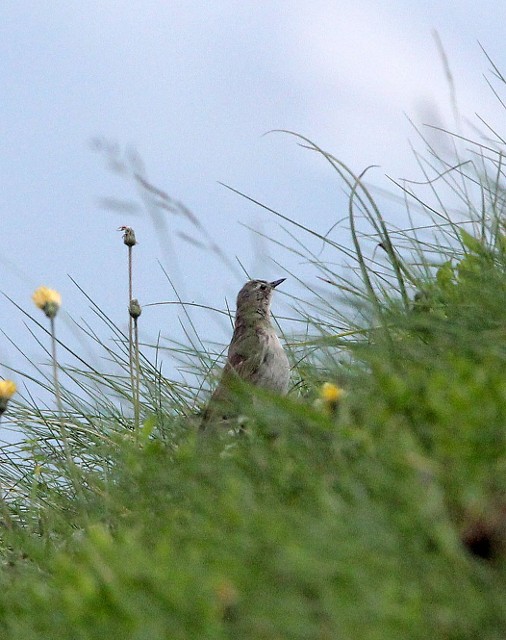
A Tawny or Water Pipit in the Pyrenees...
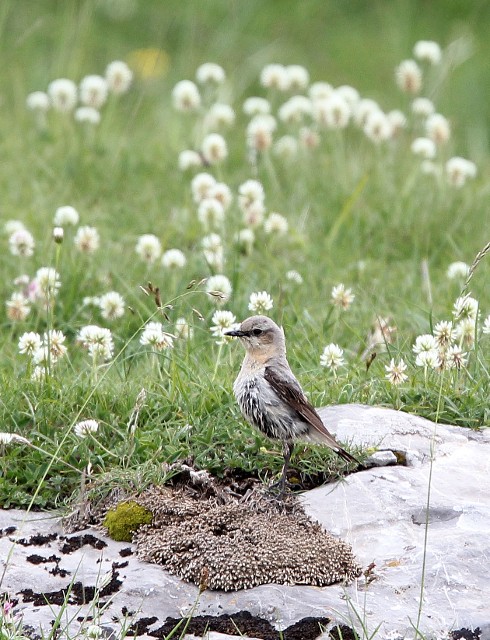
Northern Wheatear in the Pyrenees...

You can barely see it but there is a feral goat in this picture....
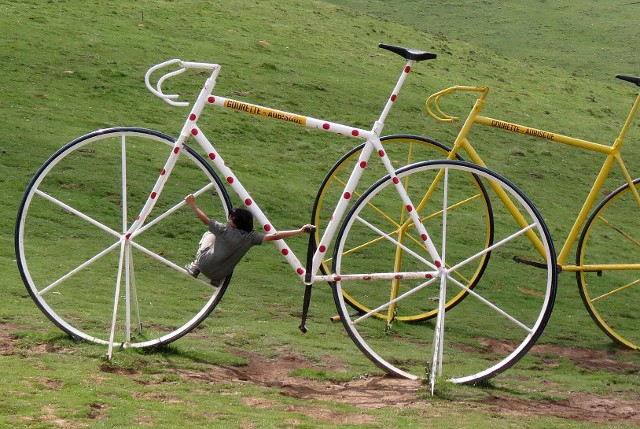
For much of our trip we were on actual Tour du France routes...
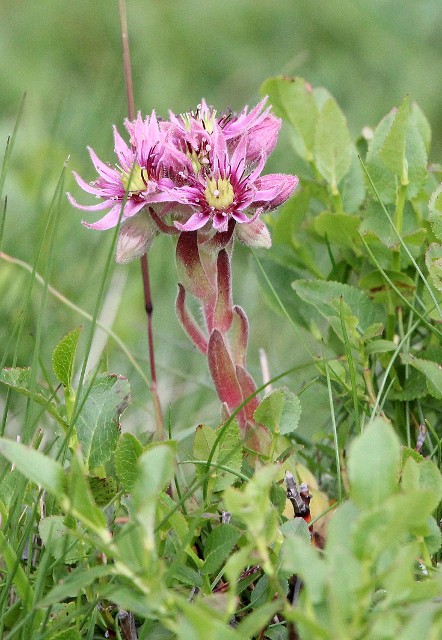
A Houseleek (Sempervivum species) in the Pyrenees...
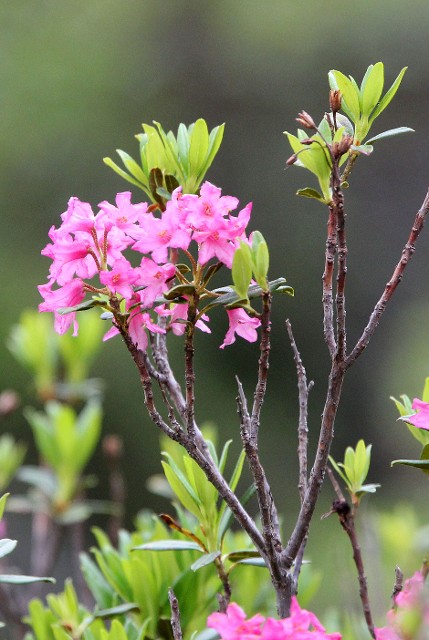
The hills were exploding with color from the Rhododendrum ferrugineum.
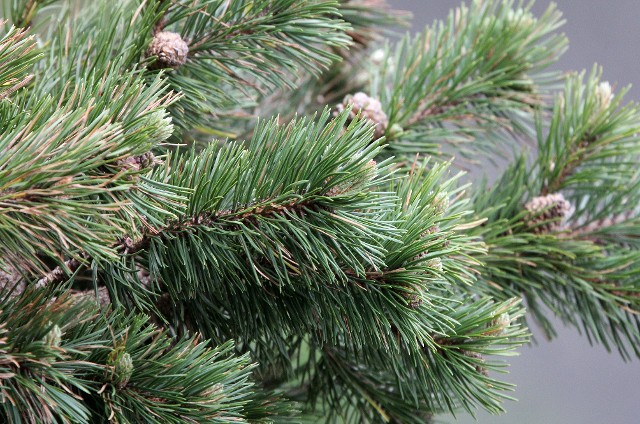
Scotts Pine (Pinus sylvestris) were common in the Pyrenees.
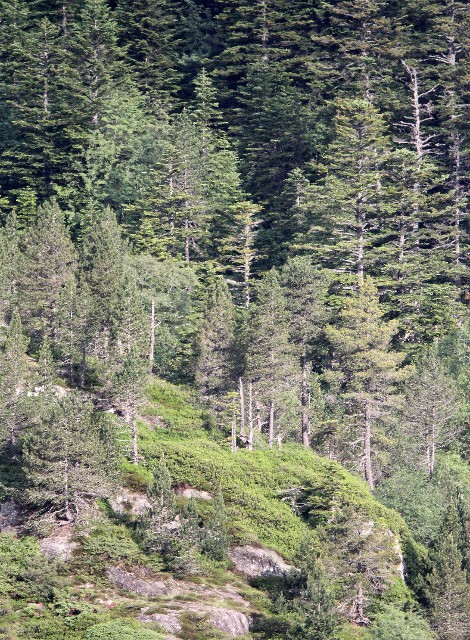
Mixed conifer forest in the Pyrenees...
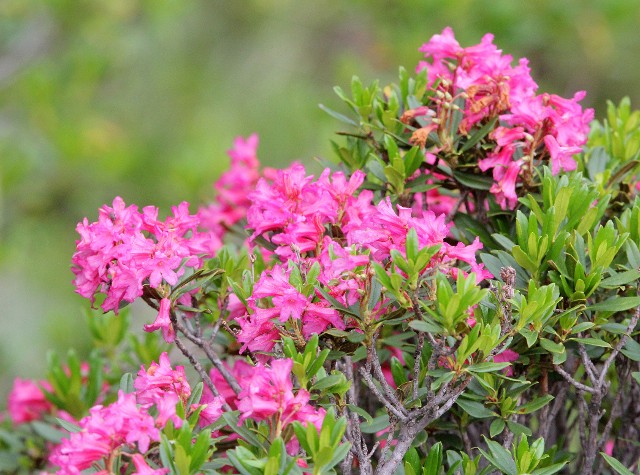
Rhododendrum ferrugineum

Arrens-Marsous, France. This was a truly oustanding little village in the Pyrenees. Excellent place to stay for a couple days.
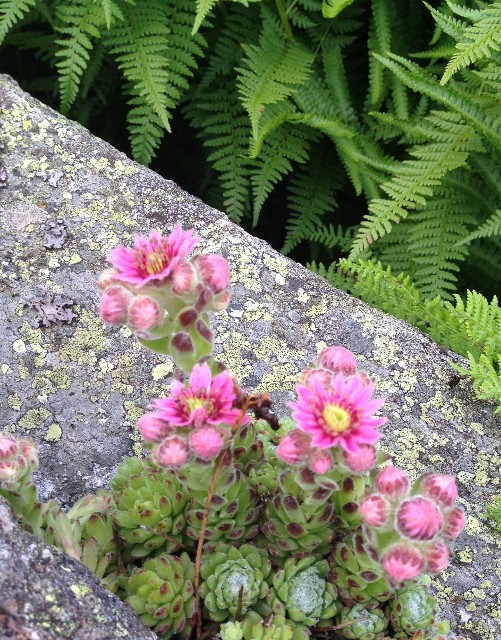
Houseleek in the Pyrenees...

Spectacular mist in the Pyrenees
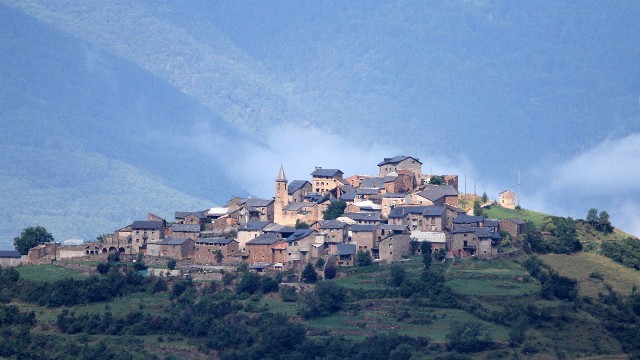
Just one of the countless spectacular little villages we passed during our drive through the Pyrenees. What a great day!
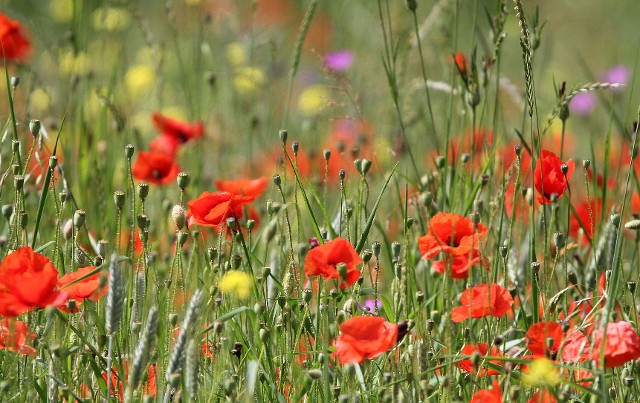
The fields of Vercors were filled with European Poppies (Papaver rhoeas).
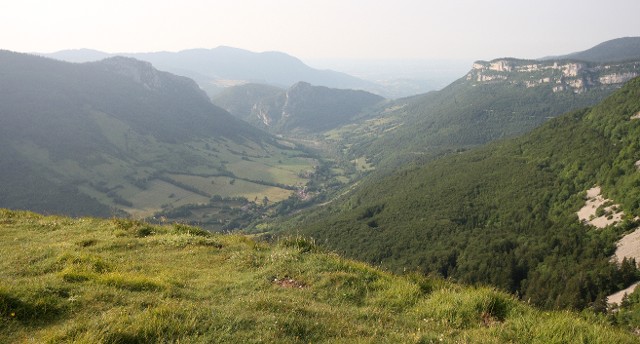
A stunning view of Vercors from near our lodge at Auberge du Pioneer...
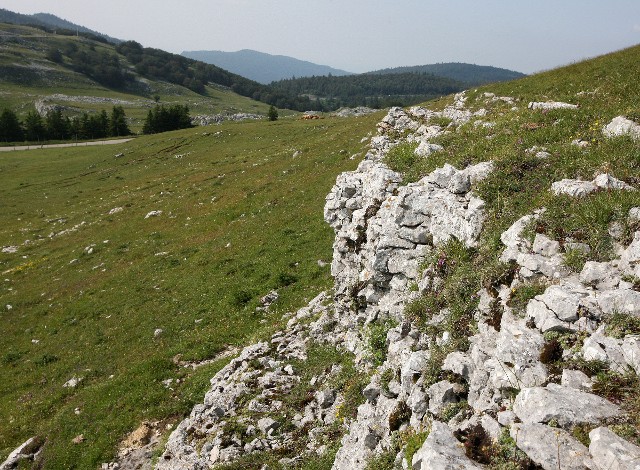
Vercor National Park
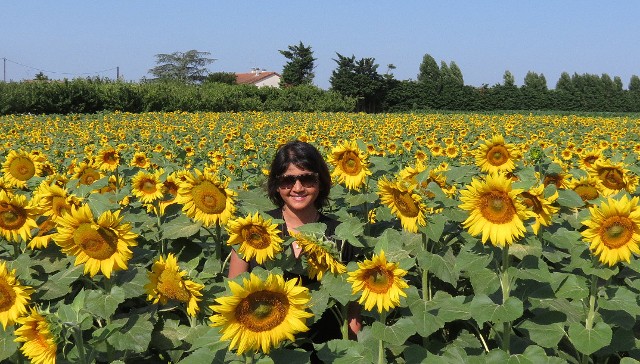
My little "Som"flower!
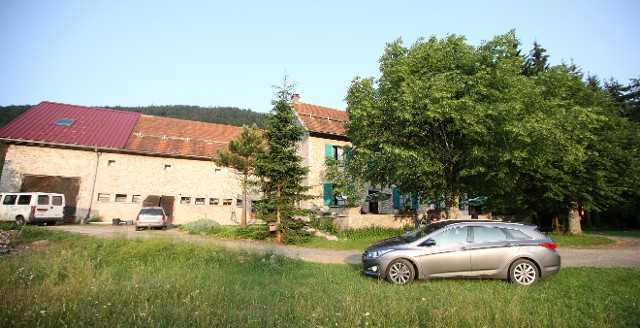
Auberge du Pioneer, our lodge in Vercors - very nice!
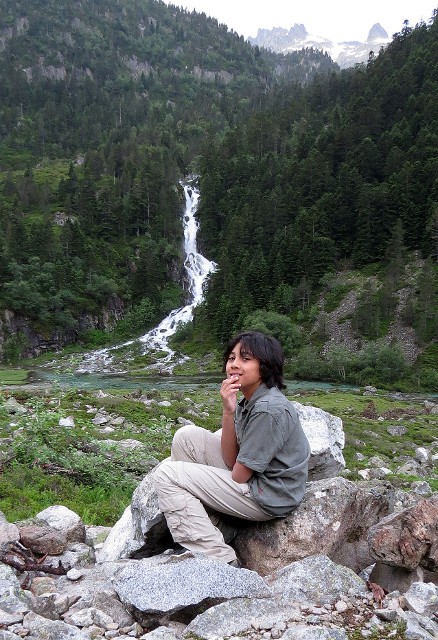
My little Izard....
Be sure to check out our Pbase Galleries for more pics of France!
